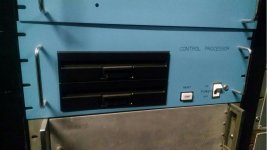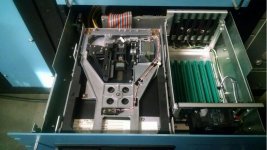...
Comparing a SUN to an S100 computer is more than unfair, the SUN is basically a single-board computer with some I/O expandability.
Hmmm, the original Stanford University Network (SUN) machine was 68K on Multibus. Even as late as the Sun4/3xx systems there was only cache RAM on the VME CPU card; I have one such system here with 32MB in four 8MB cards (populated with a metric ton of 41256 DIPs). Multibus was very common in the router space; the original cisco boxen were Multibus, as were the Proteon boxen. 68000, 68020, and 68030 were common in that space.
The S-100 bus is and was a lousy industrial bus; Cromemco (and others) took a lemon and made lemonade. Now, IEEE-696-1983 was a vast improvement, and, again, Cromemco made some fantastic products (topping out with the XXU 68020 CPU card, used even in military applications). But in terms of actual bus design Multibus and VME are far better for the electrically noisy industrial environment. As much as I like the TRS-80 Model II line, the Model II bus would have been a lousy industrial bus, too.
A bussed based system can never compete with the speed of a single-board computer like a PC or the SUN. A bus adds so much downside but has a huge high side. Try changing the basic type of processor in a SUN or a PC.
Actually not hard to do in an old SUN. This is exactly what happened between the Sun 3/xxx and Sun 4/xxx systems; many cards were upward-compatible in those early VME systems.
S100 is much better as a hobbyist system because all it's short falls are upsides for a hobbyist.
The same can be said for ISA passive backplane systems. S-100 was early and became ubiquitous in the CP/M space, and the engineering faults in the basic design can be overcome. But the merits of S-100 as a hobbyist bus aren't on trial here; the simple and basic fact is that there are better industrial bus systems, and many proprietary bus designs made it out to industry, along with many more Multibus designs.
I hope this particular chassis does prove to be S-100, as it would be a fantastic find. But the odds aren't great, unfortunately.





